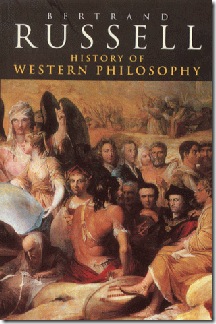Its all about books: from classics, to hard to get including banned books and audio books
Thursday, July 3, 2014
Why Men Don't Listen and Women Can't Read Maps by Barbara Pease, Allan Pease
Thursday, June 5, 2014
The Conquest of Illusion - J.J. van der Leeu
The Conquest of Illusion
by
J.J. van der Leeu
Saturday, August 24, 2013
CATCH-22 - JOSEPH HELLER

by
JOSEPH HELLER
Read
Saturday, November 6, 2010
A Painted House by John Grisham
A Painted House
by
John Grisham
The outsiders arrive in Black Oak to work in the cotton harvest for Luke's father and grandfather, who struggle to pay their bills. The hill people come from the mountains in the northern part of the state and are considered hillbillies. The low-class Spruills pitch a tent and set their camp in the Chandler front yard --- an unforgivable act, according to Luke.
By contrast, the Mexicans live in the barn. One of them, Cowboy, terrifies Luke when he shows off a switchblade and the intent to use it if necessary. Conflict erupts when Hank Spruill, a hulking giant of a young man, bullies the Mexicans. Hank antagonizes everyone he meets in the small town of Black Oak. Luke witnesses one brutal thrashing that Hank gives a local boy. The consequences of that encounter remain a dark secret the boy is forced to keep.
Grisham develops a suspenseful story, characteristic of his earlier books. A PAINTED HOUSE is a tale of social ambiguities inherent in small communities. On the one side, Luke's family is financially superior to the visiting clans. But he is made to feel inferior when the malicious Hank points out that the Chandlers' clapboard house is a gray, unpainted wood. Hank boasts that the Spruill residence in Eureka Springs is painted white.
Luke's love for baseball consumes him. He longs to play one day for the St. Louis Cardinals, his ticket out of the farming community. He saves his meager wages from picking cotton to buy a Cardinals jacket. However, Luke makes a choice based on friendship that will complicate his dream.
Grisham's words allow the reader to become one with his characters and their surroundings. Ordinary lives become complex with tiny twists of plot. His characters come alive on the page. One cares about the outcome of each side story in the entire piece. A PAINTED HOUSE is set apart from ordinary coming-of-age stories by Grisham's artful use of sensory details. One can hear a hissing, coiled snake, feel the chill blast of a tornado's fury and smell the stench of water-soaked cotton balls.
Friday, September 10, 2010
The Notebooks of Leonardo Da Vinci

The Notebooks of Leonardo Da Vinci
Read
Download audio book
Thursday, July 8, 2010
The Cheater's Handbook

Cheater's
Handbook
The Naughty Student's Bible
Bob Corbett
On one hand, you have the lackluster scholastic endeavorer who knows his stuff. No, not his academic stuff—his own stuff. He knows that his ass'll be too lazy to get around to an assignment every now and then and that when that life-threatening moment arrives, he'll have The Cheater's Handbook in hand to make sure he's doing his corner-cutting right, to make sure that he is indeed taking the shortest path from Point F to Point A. (The expected societal analysis
about why he feels the need to accomplish this can be found in the final chapter.) Yes, The Cheater's Handbook will be the one book in his life that he ever does study.
On the other hand, you have the teacher who omehow discovered this manual and thought he'd
get one up on all those miserable little cretins who turn his life into a winless Tom & Jerry-esque combat day in and day out. To that breed of academic, let us first say: You're doing something terribly wrong. Very rarely does a great teacher have a room full of cheaters. A truly great teacher can take even a compulsive cheater—one who thrives on it not out of necessity but for sport—and transform him for that one semester into an eager beaver who shows up early, enjoys doing the homework, and comes to ask questions on his own tune. How? By making it interesting!
When are all you teachers out there going to realize how boring you make every thing you talk
about? Do you think that paraphrasing the previous night's reading assignment is a creative way to teach?
Read
THE SELFISH GENE RICHARD DAWKINS
THE SELFISH GENE
By
RICHARD DAWKINS
Read
THE ART OF DECEPTION - KEVIN D. MITNICK

Controlling the Human Element of Security
KEVIN D. MITNICK
&
William L. Simon
Foreword by Steve Wozniak
Read
The Master and Margarita Mikhail Bulgakov
Read
Thursday, July 1, 2010
My experiences, the Scott Inquiry, the British Legal System
I am reminded of the very appropriate quote from Edmund Burke (1729-97) “It is necessary only for the good man to do nothing for evil to triumph.”
Read
BIG LIES : Demolishing The Myths of the Propaganda War Against Israel
The War in the Middle East is nearly sixty years old. Most people alive today are unfamiliar with its history and origins and lack knowledge of its facts. This state of ignorance provides a fertile ground for the unscrupulous to create myths that will justify their destructive agendas. The political propaganda machine has created many such myths to fuel their war against the Jewish state.
Read
A Global Economy without a Global Government
Three globalization factors are hastening in the globalization of trade. These factors are
1. Advances in computer and communications technology permit an increase flow of idea and
information across border,
2. The progressive reduction of barriers to investment and trade by most governments, and
3. The trend toward the unification and socialization of the global community because of
preferential trading arrangements.
The first factor leads to a reduction of geopolitical barriers. The second factor leads to mobility
of workforce among trading nations, and the third factor encourages transfer of technology. The
globalization of trade has led to a global economy. However, there is as yet not a global
government to manage the new global economy. Despite this, entrepreneurs can still benefit from breakthrough-, social-, and developmental-disequilibrium to make a fortune.
Read
9/11 SYNTHETIC TERRORISM MADE IN USA
9/11 SYNTHETIC TERRORISM MADE IN USA – Webster Griffin Tarpley
TABLE OF CONTENTS
INTRODUCTION
CHAPTER I – THE MYTH OF THE TWENTY-FIRST CENTURY
CHAPTER II – THE THEORY AND PRACTICE OF SYNTHETIC TERRORISM
CHAPTER III – THE ROOTS OF 9/11: THE GLOBALIZED CRISIS OF THE 1990s
CHAPTER IV: AL QAEDA: THE CIA’S ARAB LEGION
CHAPTER V: COULD THE ALLEGED HIJACKERS FLY THE PLANES?
CHAPTER VI: THE COLLAPSE OF WORLD TRADE CENTER 1, 2, AND 7
CHAPTER VII: WHAT HIT THE PENTAGON?
CHAPTER VIII: SHANKSVILLE
CHAPTER IX: “ANGEL IS NEXT” – THE INVISIBLE GOVERNMENT SPEAKS
CHAPTER X: ANTHRAX
CHAPTER XI: INSIDER TRADING; CELL PHONES; MI-6 AND MOSSAD
CHAPTER XII: CONSPIRACY THEORY: THE GREAT AMERICAN TRADITION
CHAPTER XIII: THE 9/11 MYTH: COLLECTIVE SCHIZOPHRENIA
CHAPTER XIV: NETWORKS OF INTEREST
CHAPTER XV: ISLAMIC FUNDAMENTALISM: FOSTERED BY US FOREIGN POLICY
CHAPTER XVI: ELECTION 2004 IN THE SHADOW OF SYNTHETIC TERRORISM
AND WAR
AFTERWORD: 2004: NOT AN ELECTION, BUT A CIA COVERT OPERATION
BIBLIOGRAPHY
THE WORLD AS I SEE IT – Albert Einstein
This book does not represent a complete collection of the articles, addresses, and pronouncements of Albert Einstein; it is a selection made with a definite object– namely, to give a picture of a man. To-day this man is being drawn, contrary to his own intention, into the whirlpool of political passions and contemporary history. As a result, Einstein is experiencing the fate that so
many of the great men of history experienced: his character and opinions are being exhibited to the world in an utterly distorted form.
Read
A HISTORY OF WESTERN PHILOSOPHY – BERTRAND RUSSELL

by
BERTRAND RUSSELL
Since its first publication in 1945? Lord Russell's A History of Western Philosophy has been universally acclaimed as the outstanding one-volume work on the subject -- unparalleled in its comprehensiveness, its clarity, its erudition, its grace and wit. In seventy-six chapters he traces philosophy from the rise of Greek civilization to the emergence of logical analysis in the twentieth century. Among the philosophers considered are: Pythagoras, Heraclitus, Parmenides, Empedocles, Anaxagoras, the Atomists, Protagoras, Socrates, Plato, Aristotle, the Cynics, the Sceptics, the Epicureans, the Stoics, Plotinus, Ambrose, Jerome, Augustine, Benedict, Gregory the Great, John the Scot, Aquinas, Duns Scotus, William of Occam, Machiavelli, Erasmus, More, Bacon, Hobbes, Descartes, Spinoza, Leibniz, Locke, Berkeley, Hume, Rousseau, Kant, Hegel, Schopenhauer, Nietzsche, the Utilitarians, Marx, Bergson, James, Dewey, and lastly the philosophers with whom Lord Russell himself is most closely associated -- Cantor, Frege, and Whitehead, co-author with Russell of the monumental Principia Mathematica.
Read
BERTRAND RUSSELL – ABC OF RELATIVITY

Is There a God? – Bertrand Russell

by
Bertrand Russell
Read




